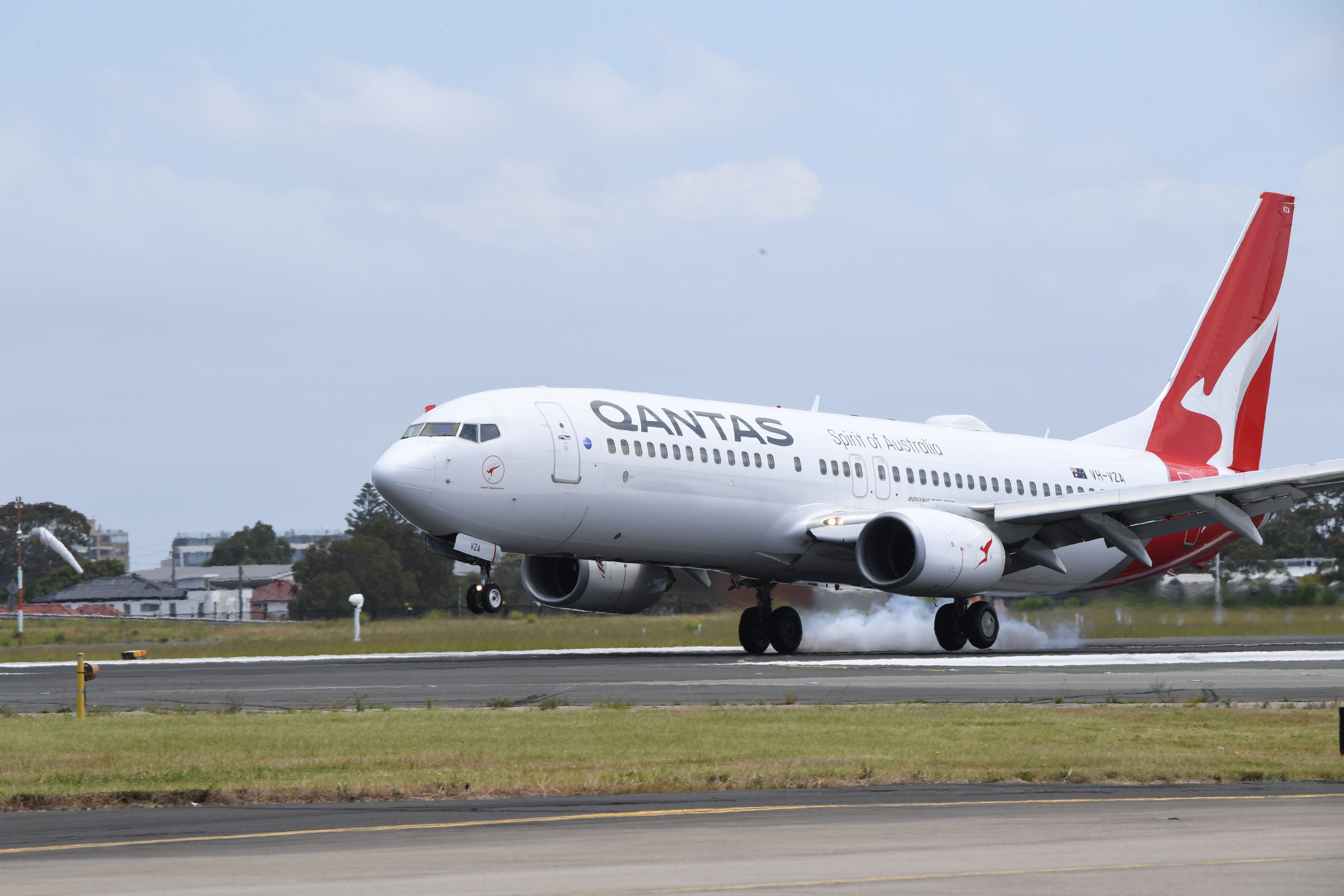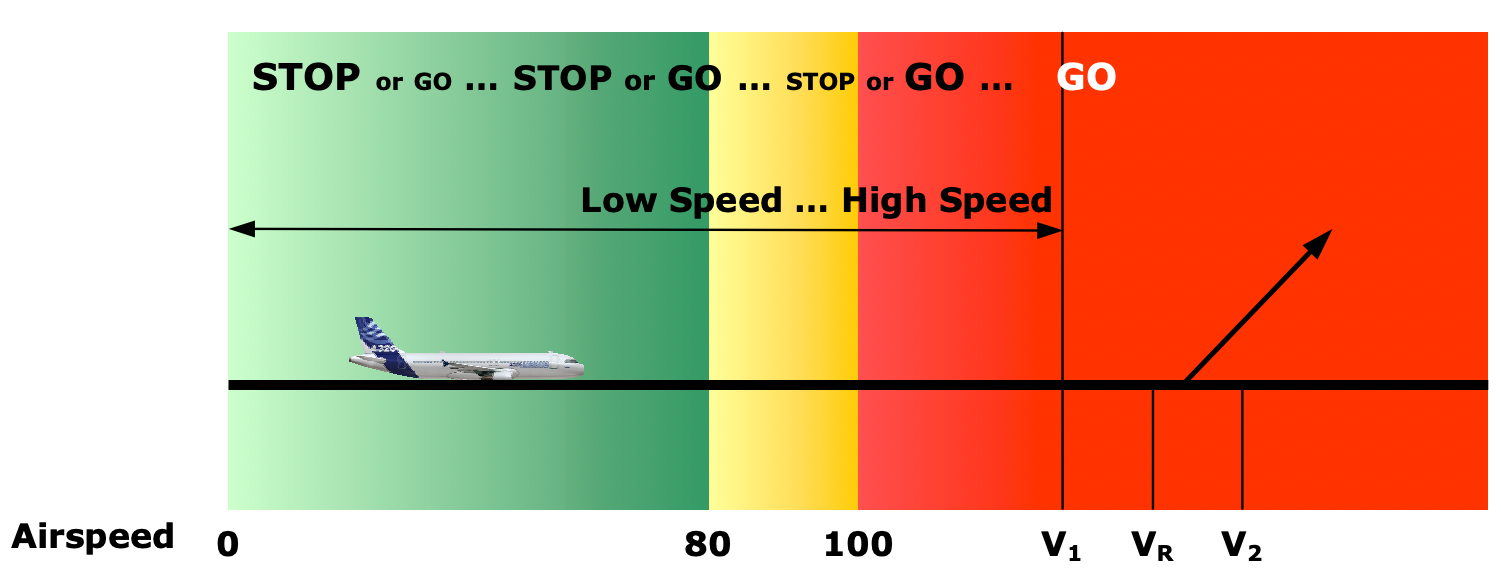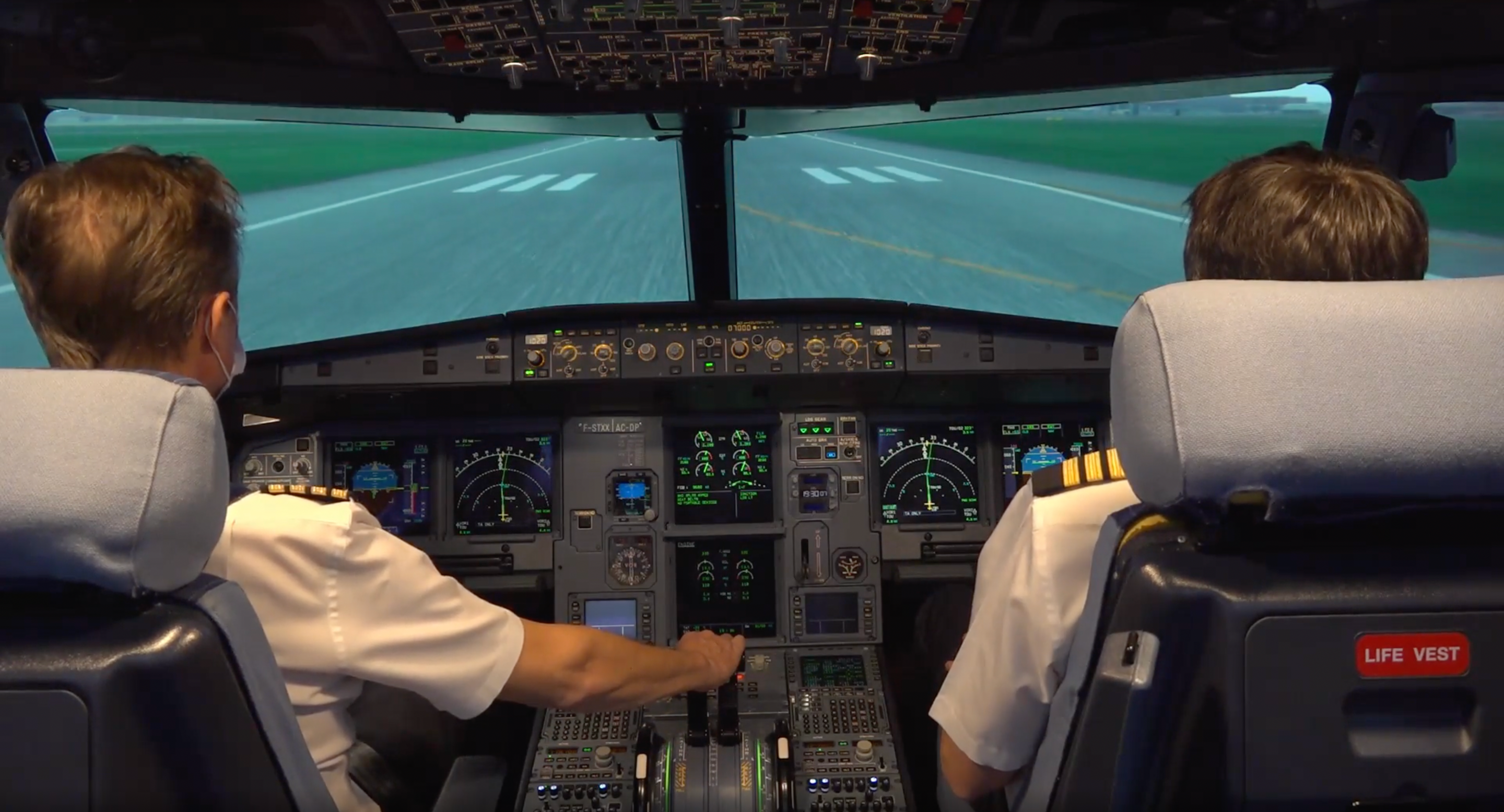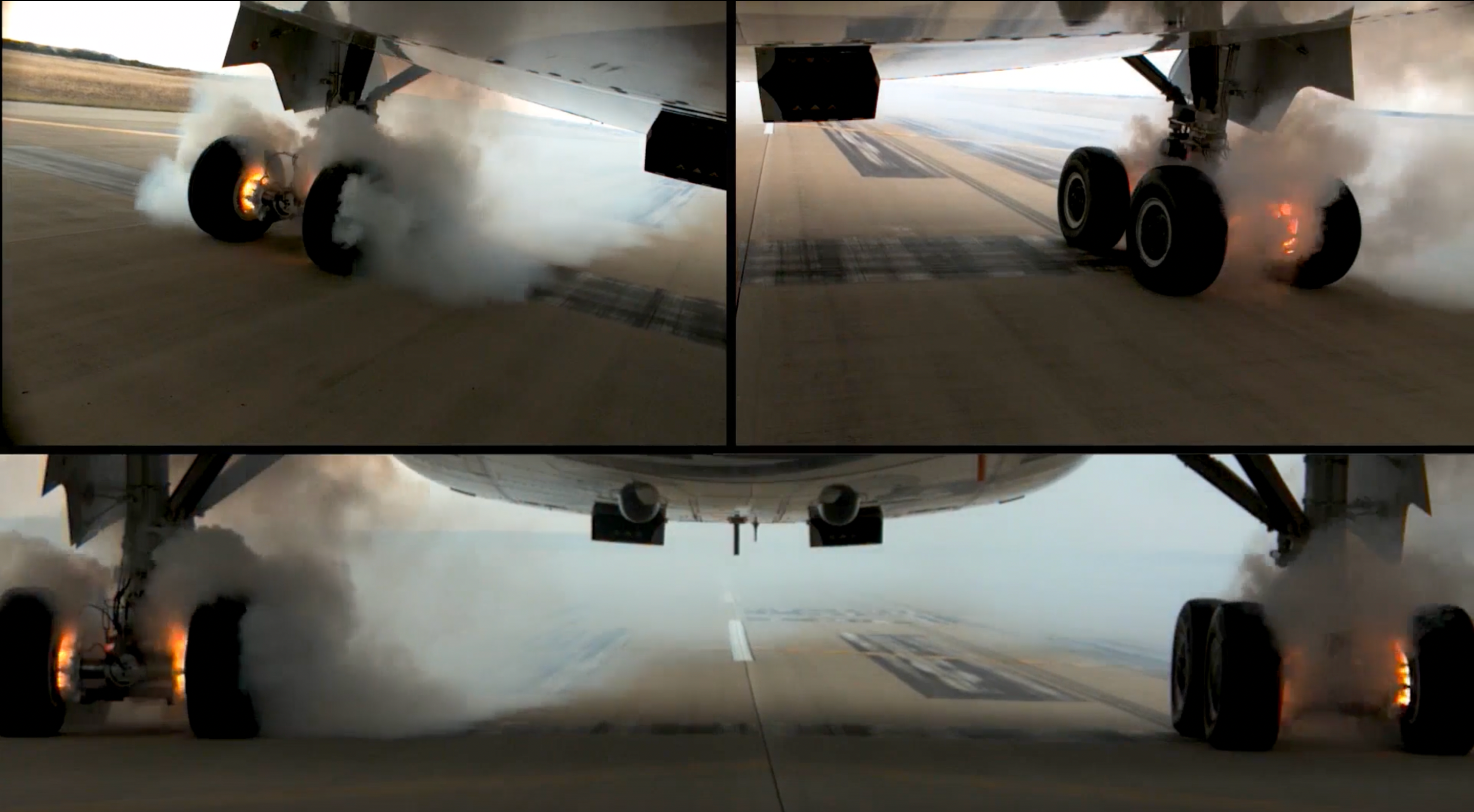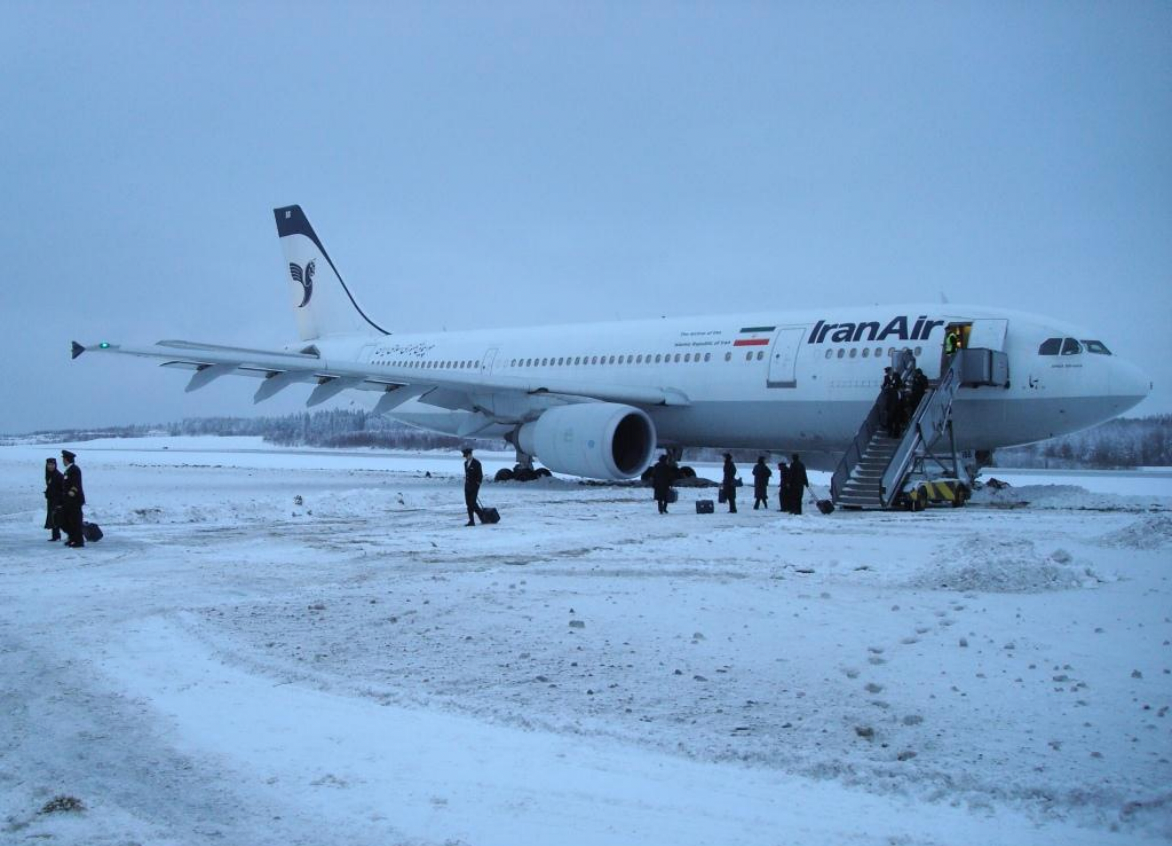A rejected takeoff or an RTO is a flight maneuver where the pilots stop the aircraft and discontinue the takeoff. There can be several reasons why such a decision is made. This includes engine failure, engine fire, major system failures, etc.
Takeoff speeds
To get a deeper level of understanding of a rejected takeoff, it is important to understand the various speeds that are involved in a takeoff.
The first speed is the V1 (Vee One) - this is called the decision speed. It is the speed at or below which the pilot should make the final decision to reject the takeoff. Above this speed, there is a chance that the aircraft may run out of runway. The V1 speed is decided by taking several factors into account.
One of them is that, at V1 speed, the aircraft must have enough control authority to counter an engine failure. A failed engine causes a thrust imbalance. The live engine which keeps on generating thrust can cause the aircraft to turn towards the inoperative engine. If this is not countered, the aircraft may run off the runway to the side.
To counter the live engine thrust, the pilots use the rudder. When the rudder is applied towards the live engine, an opposite force is generated on the vertical stabilizer which acts through the center of gravity to push the nose of the aircraft and prevent it from exiting the runway.
As the rudder is a control surface, just like any other control surface on the aircraft it needs air to flow over it to become effective. In larger aircraft, the rudder becomes effective at a certain speed. This speed is called the Minimum Control speed on Ground (VMCG). Thus, the V1 speed should be at or greater than the VMCG speed. This ensures proper directional control in an engine-out event.
The next speed that influences V1 is called Engine Failure speed (VEF). This speed is defined by the aircraft manufacturer during aircraft certification. It is the speed at which the aircraft engine is assumed to fail in a takeoff. Being above this speed ensures that the aircraft can safely get airborne with no controllability issues. The regulator allows the manufacturers to choose a VEF, but it states that there should be at least a 1-second gap between VEF and V1, as humans usually take about a second to react to an unexpected event. This is how V1 got its name.
The final speed that affects the V1 is the Maximum Brake Energy speed (VMBE). This is the speed at or above which the aircraft brakes can no longer absorb the kinetic energy of the wheels, and would therefore fail. The V1 should be always lower than VMBE. If it is above the VMBE, the aircraft cannot be stopped safely if a take-off is rejected.
Rejected Takeoff Standard Operating Procedure
There is no universal Standard Operating procedure (SOP) for a rejected takeoff. It varies from aircraft to aircraft and airline to airline. But some common things remain the same. For starters, in most operations, the decision for rejected takeoff is taken by the Pilot in Command (PIC) or the captain of the flight. This remains like so even when the first officer or the co-pilot is performing the takeoff.
When the first officer is in control of the takeoff, he or she sets the initial takeoff thrust. Once set, he/she removes their hand from the thrust levers and the captain puts his/her hand on it. This allows for the captain to quickly reduce thrust and reject the takeoff if it becomes necessary. The captain keeps his/her hand on the levers until V1 speed is reached, at which point, flying is committed.
In the transport category aircraft, the rejected takeoff is divided into two phases - the low-speed phase and the high-speed phase. For Airbus aircraft, the high-speed segment begins once the aircraft speed goes above 100 knots; for Boeings, it is 80 knots. Why is this important? Well, because a high-speed rejected takeoff can lead to a lot of unwanted situations which will be discussed later.
Once at the high-speed phase, pilots are trained to stop only for a limited list of critical failures, including engine failure or fire. So, once above the high-speed phase reference speed for the aircraft, if a non-critical failure occurs, the captain should call ‘GO’. If a critical failure occurs they should call ‘STOP’ and abort the takeoff.
High speed rejected takeoff
As we have talked about before, rejecting takeoff at higher speeds is discouraged. This is because, at higher speeds, the brakes need to absorb more energy and this can lead to brake fires and tires bursting. This can damage the aircraft and jeopardize the safety of the crew and the passengers. To give you an example, in an Airbus aircraft above 100 knots and below V1, the takeoff should be only rejected for any of the following reasons plus any RED warnings:
- Engine failure/fire
- Thrust reverser fault
- Thrust reverser unlocked
- Sidestick fault.
During the certification phase of the aircraft, the manufacturer is required to perform a high-speed rejected takeoff to show the regulators that the aircraft's brakes can handle it. This is one of the riskiest tests performed during testing, as this causes the brakes to catch fire and can cause damage to the aircraft. As such, it is one of the last tests performed during the certification as most of the time the entire landing gear assembly of the aircraft needs to be replaced after the test.
Low speed rejected takeoff
A low-speed rejected takeoff is usually not much of an event. However, at very low speeds, there can be controllability issues. As discussed before, for the rudder to be effective, the aircraft needs to accelerate to a speed called VMCG. Below this speed, the rudder cannot control the aircraft in an engine-out situation. So, if an engine fails at a low speed, the pilots need to react fast.
This includes immediate idling of thrust so that the thrust asymmetry is reduced - this should prevent the aircraft from being pushed off of the runway. At the same time, reverse thrust should be activated on the live engine which helps in braking and trajectory control, especially when the runway is wet.
Also, as in most aircraft, the rudder pedal has some control over nose wheel steering (about 6 degrees on either side) - the application of the rudder and consequent movement of the nosewheel can give a level of controllability. The pilots can also utilize the differential braking technique whereby the brakes on the wheels of the preferred direction can be applied, aiding in control of the aircraft.
In 2011, an Iran Air A300-600 departed the runway in a low-speed rejected takeoff at Stockholm Arlanda airport in Sweden. During the takeoff, the left engine failed at 59 knots; well below the VMCG. The flight crew reacted by idling the thrust levers and applying an opposite rudder which activated the limited nosewheel steering.
They also used the tiller in the later stages to activate the full nose wheel steering. But, due to the considerably high speed, the activation of steering caused the wheel to skid which highly reduced its effectiveness. At the same time, the flight crew failed to use the reverse thrust, which would have been a bit of help in keeping the aircraft on the runway.

